Myer Kutz, Myer Kutz0-8155-1538-3, 3-540-21117-9, 978-0-8155-1538-8
The 22 chapters are contributed by leading experts worldwide with numerous illustrations, tables, and references. The book includes the new USDA regulations for «certified organic» processing, as well as state-of-the-art technologies for equipment both on the farm and in the plant.
Table of contents :
Front Matter……Page 1
Table of Contents……Page 0
Preface……Page 4
Table of Contents……Page 7
1.1 Nature of Work and Necessary Skills……Page 25
1.2 Academic and Industry Preparation……Page 26
1.3.1.1 Specific Accountabilities Include……Page 29
1.3.2.1 Essential Functions……Page 30
1.3.4.2 Requirements……Page 31
1.3.5 Job Description Sample 5……Page 32
1.4 Engineering Jobs……Page 34
References……Page 36
2.1 Background……Page 37
2.1.1 Federal Register……Page 38
2.1.2.1 State and Local Regulations……Page 39
2.2.1.1 Sanitation Performance Standards……Page 40
2.2.1.2 Sanitation Standard Operating Procedures (SSOP)……Page 41
2.3 Hazard Analyses and Critical Control Point Program (HACCP)……Page 42
2.3.1 Prerequisite Programs……Page 43
2.4 Current Good Manufacturing Processes (cGMP)……Page 44
2.5 Meat Processing……Page 46
2.6 Shell Eggs……Page 48
2.7 Seafood Processing……Page 49
2.9.1 Alcoholic Beverages……Page 51
2.9.3 Bottled Water……Page 52
2.9.4 Fruit and Vegetable Juices……Page 53
2.9.5 Pasteurization……Page 54
2.9.6 Milk and Milk Products……Page 55
2.10 Canned Foods……Page 56
2.12 Export Foods……Page 57
2.13 Imported Foods……Page 58
2.14 Organic Food Processing……Page 60
References……Page 61
Acronyms……Page 64
3.1 Introduction……Page 66
3.2.1.1 High Pressure Processing……Page 67
3.2.1.2 Pulsed Electric Field Processing……Page 68
3.2.1.4 Ultraviolet Disinfection……Page 70
3.2.2.1 Ozone……Page 71
3.2.2.2 Other Chemical Interventions……Page 72
3.2.3 Hurdle Approach……Page 74
3.3.1 Chromogenic Microbiological Media……Page 75
3.3.2.2 Polymerase Chain Reaction Assays……Page 76
3.3.3 Biosensors……Page 77
3.3.4 Fourier Transform Infrared Spectrometry……Page 79
3.4 Packaging Applications in Food Safety……Page 80
3.4.3 Tamper Evident Packaging……Page 81
3.5 Tracking and Traceability……Page 82
3.6.1 Acrylamide……Page 83
3.7 Conclusions……Page 84
References……Page 85
4.1 Introduction……Page 92
4.2 Vehicle Guidance……Page 93
4.2.1.1 Manual Vehicle Guidance……Page 94
4.2.1.2 Operator-Assisted Vehicle Guidance……Page 96
4.2.1.3 Semi-Autonomous Vehicle Guidance……Page 97
4.2.1.4 Fully-Autonomous Vehicle Guidance……Page 98
4.4 Guidance Methods……Page 99
4.4.1 Global Positioning System (GPS)……Page 101
4.4.2 Machine Vision……Page 103
4.4.5 Crop Feelers……Page 104
4.5 Challenges Facing Autonomous Vehicles……Page 105
4.5.1 Safety……Page 106
4.6 Summary……Page 108
Other Contacts……Page 110
5.2 History……Page 111
5.3 Machine Design: Pre-Harvest Issues……Page 112
5.5 Heads: Grain Platforms, Corn Heads, and Strippers……Page 113
5.7 Cylinder or Rotor and Concave……Page 117
5.8 Separation: Straw Walkers and Rotary Separation……Page 121
5.9 Cleaning Shoe……Page 122
5.11 Grain Bin and Unloading Auger……Page 124
5.12 Other Attachments……Page 125
5.13 Operator’s Station, Adjustments, and Monitoring Systems……Page 127
5.15 Grain Damage……Page 128
References……Page 129
6.1 Introduction……Page 130
6.3 Physical Properties of Agricultural Grains……Page 131
6.4 Management Factors……Page 132
6.6.1 Purpose of Drying……Page 133
6.6.2 Classification of Dryer Types……Page 134
6.6.3 Theory and Simulation of Drying……Page 136
6.7 Structural Loads……Page 139
6.7.1 Loads Caused by the Grain……Page 141
6.7.2 Eccentric Discharging of Grains from a Bin……Page 142
6.8 Stresses in Granular Materials……Page 143
6.9 Temperature Cables……Page 144
6.10 Thermal Loads and Moisture-Induced Loads……Page 145
6.11.1 Flat Storage……Page 146
6.11.2 Janssen’s Equation……Page 149
6.11.3 Flat Storage, Shallow, and Deep Bins……Page 151
6.11.4 Loads on Hoppers……Page 152
6.12 Snow and Wind Loads……Page 154
6.13 Seismic Loads……Page 158
6.14 Grain Handling……Page 160
6.14.1 Screw Conveyors……Page 161
6.14.2 Belt Conveyors……Page 163
6.14.3 Bucket Elevators……Page 165
6.14.4 Pneumatic Conveyors……Page 168
6.16 Grain Cleaning……Page 170
6.17 Testers for Measuring Flow Properties……Page 172
6.17.2 Examples of Flow Testers……Page 173
6.18 Modeling of Granular Materials……Page 175
References……Page 179
7.2 The Milking Routine……Page 183
7.3 The Milking Machine……Page 184
7.4 Milking Unit……Page 186
7.5.2 Weigh Jar Systems……Page 188
7.6 Milking System Piping……Page 189
7.7 Vacuum Production……Page 190
7.8 Vacuum Regulation……Page 192
7.9 Vacuum Gauge……Page 193
7.12 Receiver Group……Page 194
7.14 Milkline Sizing – Pipeline Systems……Page 195
7.15 Pulsator Airline Sizing……Page 196
7.17 Vacuum Pump Sizing……Page 197
7.18 Milking Parlors……Page 198
7.20 Environmental Control……Page 199
7.21.1 Herringbone……Page 200
7.21.3 Side Open or Tandem……Page 201
7.21.5 Flat……Page 202
7.22.2 Automatic Cluster Removers……Page 203
7.22.4 Animal Identification and Data Collection/Records Systems……Page 204
References……Page 205
8.1 Introduction……Page 207
8.2 Clarification, Separation, and Standardization……Page 208
8.3 Pasteurization……Page 210
8.5 Homogenization……Page 216
8.7 Evaporation……Page 219
8.8 Drying……Page 222
8.9 Ice Cream Manufacturing Equipment……Page 224
8.10 Butter Manufacturing Equipment……Page 226
8.11 Cheese Manufacturing Equipment……Page 227
References……Page 228
9.2 Drying……Page 229
9.2.1 On-Farm Drying……Page 230
9.2.1.1 Combined Conduction-Convection Heating Rotary Dryer……Page 231
9.2.2 Fluidized Bed Dryers……Page 233
9.3.1 Grain Damage from Insects……Page 234
9.3.1.2 Heat Treatment……Page 235
9.3.1.4 Modified Atmosphere……Page 236
9.4.1 Artificial Aging……Page 239
9.4.1.1 Design and Development of Steam Chamber……Page 242
9.4.2 Aroma Enhancement of Milled Rice……Page 243
9.4.2.2 Aroma Enhancement of Milled Rice……Page 244
9.5.1 Retort Packaging……Page 245
9.5.1.2 Soaking Process……Page 246
9.5.1.4 Filling and Closing Processes……Page 247
9.5.1.6 Sterilization of Food in Retort Pouch……Page 248
9.5.2.1 Quick Cooking Rice Process……Page 249
9.5.2.2 Important Factors Affecting the Process of Quick Cooking Brown Rice……Page 251
9.6.1 Image Analysis……Page 252
9.6.2 Texture Evaluation of Cooked Rice……Page 253
9.6.2.1 Objective Measurement of Cooked Rice Texture……Page 254
9.6.3 Application of NIR Spectroscopy on Grain Quality……Page 255
References……Page 256
10.1.2 Importance of Fruit and Vegetables……Page 265
10.1.5 Processing Systems……Page 266
10.2.1 General Background……Page 267
10.2.2 Fruit Development……Page 268
10.2.3.2 Sugars……Page 269
10.2.3.4 Starch……Page 270
10.2.3.6 Flavor Volatiles……Page 271
10.2.3.7 Plant Pigments……Page 272
10.2.3.9 Proteins……Page 273
10.2.3.12 Fat……Page 274
10.2.4 Structural Features……Page 275
10.3 Biological Deterioration and Control……Page 276
10.4.1 Physical Methods of Reducing Deterioration……Page 278
10.4.2.2 Disinfestation Treatments……Page 280
10.5.2 Preservation by Manipulation of Water Activity……Page 281
10.5.3.2 Benzoates……Page 282
10.5.4 Preservation by Acidification……Page 283
10.5.6 Preservation by Heat……Page 286
10.5.7 Food Irradiation……Page 287
10.6.1 Canning……Page 288
10.6.3 Freezing……Page 290
10.6.5 Sugar Preserved Products……Page 291
10.6.6 Juice Processing……Page 292
10.6.6.1 Mechanical Pressing……Page 294
10.6.6.2 Clarification of Juice……Page 295
10.6.6.3 Pulp Enzyming……Page 296
10.6.6.4 Enzyme Liquefaction……Page 297
10.6.7.1 Minimal Processing……Page 298
10.7 Quality Control/Assurance……Page 301
10.7.1 Traceability……Page 303
10.8.1 Preliminary Studies……Page 304
10.8.2.1 Installation and Operation of a Processing Facility……Page 305
10.8.2.4 Reception of Raw Material……Page 306
10.8.2.5 Processing Room……Page 307
10.8.2.8 Other Facilities……Page 308
10.8.3 Equipment Specifications for Processing of Horticultural Crops……Page 309
References……Page 310
11.2 Water in Foods……Page 317
11.3 Types of Water in Foods……Page 319
11.4 Food Stability and Moisture Relationships……Page 320
11.5.1 Psychrometrics……Page 324
11.6 Drying Curves and Mechanisms of Drying……Page 325
11.7.1 Hot Air Dryers……Page 330
11.7.3 Batch Dryers……Page 331
11.7.5 Vacuum Dryers……Page 332
11.7.6 Continuous Dryers……Page 333
11.7.9 Puff-Drying……Page 334
11.7.10 Drum Drying……Page 335
11.7.11 Spray Drying……Page 336
11.7.13 Freeze Drying……Page 338
11.8 Quality Changes during Drying……Page 340
11.9 Evaporation……Page 342
11.10.1 Pan and Batch Evaporators……Page 343
11.11.1 Short Tube Evaporator……Page 344
11.11.3 Falling Film Evaporator……Page 345
11.11.4 Rising-Falling Film Evaporator……Page 346
11.11.5 Agitated Film Evaporator……Page 347
11.12 Single Effect Evaporators……Page 348
11.13 Multi-Effect Evaporators……Page 349
11.14 Mechanical Vapor Recompression……Page 350
11.16 Conclusion……Page 352
References……Page 353
12.1 Introduction……Page 355
12.3 Freezing Process……Page 356
12.4 Phase Change and Ice Crystals Formation……Page 359
12.5 Product Heat Load……Page 360
12.6 Freezing Time Estimations……Page 361
12.6.2 Factors Affecting the Freezing Time……Page 362
12.6.3 Modified Plank’s Equation……Page 363
12.7.1.1 Plate Freezers……Page 365
12.7.2.1 Still Air Freezers……Page 367
12.7.2.2 Air Blast Tunnel……Page 368
12.7.2.4 Fluidized Bed Freezer……Page 369
12.7.3.1 Immersion Type……Page 371
12.7.3.2 Cryogenic Freezers……Page 372
12.8.1 Effect Freezing on Physical Characteristics……Page 373
12.8.3 Effects of Freezing on Thermal Properties of Foods……Page 374
12.9.2 Dehydrofreezing……Page 376
12.11 Scope for Future Focus……Page 377
References……Page 378
13.1 Basic Concepts of Heat and Mass Transfer……Page 380
13.1.1 Conduction Heat Transfer……Page 381
13.1.3 Free Convection Heat Transfer……Page 383
13.1.5 Mass Diffusion……Page 384
13.2 Case Study 1: Thermal Sterilization Using Computational Fluid Dynamics……Page 385
13.2.1 Simulations of Thermal Sterilization in a Vertical Can……Page 387
13.2.2 Simulation of Bacteria Deactivation during Sterilization……Page 388
13.2.3 Simulation of Vitamins Destruction during Sterilization……Page 389
13.2.5 Simulation of a 3-D Pouch during Sterilization……Page 390
13.3 Case Study 2: New Approach to the Analysis of Heat and Mass Transfer in Drying and Frying……Page 391
13.4 Case Study 3: Microwave Thawing of Frozen Meat……Page 394
13.4.1 Theoretical Analysis……Page 396
13.4.3 Nomenclature……Page 399
References……Page 402
14.2.1 Stress and Strain……Page 404
14.2.2 Constitutive Relations and Classification of Materials……Page 406
14.3.1 Shear Strain Rates in a Laminar Flow……Page 408
14.3.2 Apparent Viscosity and Yield Stress……Page 409
14.3.3.1 Newtonian Fluids (sigma_o = 0, N = 1, K = mu)……Page 410
14.3.3.5 Rheological Behavior Correlated with Structure……Page 412
14.3.4.1 Vane Method Used to Determine Yield Stress……Page 413
14.3.4.2 Rotational Rheometry……Page 414
14.4 Rheology of Semi-Solid Materials……Page 416
14.4.1.1 Principles of Measuring Visco Elastic Properties Using Oscillation (Ferry, 1980)……Page 417
14.4.1.2 Setting up Oscillatoray Measurement Parameters……Page 419
14.4.2 Stress Relaxation Tests……Page 422
14.4.3 Creep Tests……Page 423
14.5.1 Interfacial Dilatational Rheology……Page 424
14.6 Conclusions……Page 426
References……Page 427
15.2.1 An Overview……Page 428
15.2.2 Sterilizing Value……Page 429
15.2.3 Process Lethality……Page 430
15.2.4 Specification of Process Lethality……Page 432
15.3.2 Unsteady (Non-Isothermal) Heat Transfer……Page 433
15.3.3 Heat Transfer Mechanisms……Page 434
15.3.4 Heat Penetration Measurement……Page 435
15.4 Process Calculation……Page 436
15.5.1 Batch Retorts……Page 439
15.5.2 Continuous Retort Systems……Page 441
15.5.2.2 Continuous Rotary Cookers……Page 444
15.5.2.3 Hydrostatic Sterilizers……Page 448
15.5.2.5 Steriflamme System……Page 449
15.6 Commercial Aseptic Process Equipment Systems……Page 451
15.7.1 Plant Registration……Page 456
15.7.4 Equipment and Procedure……Page 457
15.7.6 Establishing Scheduled Processes……Page 458
15.7.8 Process Deviations……Page 459
15.7.10 Records and Storage……Page 460
References……Page 461
16.1.1 Modeling……Page 462
16.1.2 Simulation……Page 464
16.2.1.2 Component Mass Balances with no Chemical Change……Page 465
16.2.1.4 Procedure……Page 466
16.2.2 Energy Balance……Page 467
16.2.3 Reaction Kinetics……Page 468
16.2.4 Heat and Mass Transport Equations……Page 469
16.2.5.1 Moving Boundaries……Page 471
16.3.1 Finite Differences……Page 472
16.4.1.2 Microorganism Decay……Page 474
16.4.2.1 Introduction……Page 475
16.4.2.2 Process Model……Page 477
16.4.2.3 Finite Difference Equations……Page 478
16.4.3 Example 3: Cooking of a Spherical Product – Modeling and Simulation, Based on Heat and Mass Transfer Equations and Finite Differences……Page 480
16.4.3.2 Initial and Boundary Conditions……Page 481
16.4.3.3 Non-Dimensional Analysis: Dimensionless Temperature (theta), Moisture Content (C), and Radial Length (psi)……Page 482
16.4.3.4 Finite Difference Equations Development……Page 483
16.4.3.5 Simulation……Page 484
16.4.4.2 Procedures……Page 485
16.4.4.3 Modeling……Page 486
16.5.1.1 Elements of Optimization……Page 489
16.5.1.2 Applications……Page 491
16.5.2.1 Introduction……Page 492
16.5.2.2 Dynamic Optimization……Page 493
References……Page 495
17.2 Benefits of Automation……Page 498
17.3 Computer Integrated Manufacturing……Page 499
17.4 Automation Components and Terminology……Page 501
17.5 Control System Objectives……Page 503
17.5.1 Discrete Control……Page 504
17.5.3 Block Diagrams……Page 507
17.5.4 Closed Loop Systems……Page 508
17.5.5.1 Proportional Control Action……Page 510
17.5.5.2 Integral Control Action……Page 512
17.5.5.3 Derivative Control Action……Page 513
17.5.6 Open Loop Control Systems……Page 514
17.5.7 Predictive Control……Page 515
17.5.8 Feed-Forward Control……Page 516
17.6 Controllers……Page 517
17.6.3 Power Supply……Page 518
17.6.5 Chassis……Page 519
17.6.7 Controller Programming……Page 520
17.6.8 HMI – Human-Machine-Interface……Page 523
17.7 Sensor Fundamentals……Page 525
17.7.2 Accuracy and Precision……Page 526
17.7.3 Sensor Dynamics……Page 527
17.7.7 Maintenance……Page 529
17.7.8 Specification of Sensors……Page 530
17.7.9.1 Switch Inputs……Page 531
17.7.9.3 Toggle Switch……Page 532
17.7.9.5 Photocell……Page 533
17.7.9.7 LVDT……Page 534
17.7.9.10 Temperature……Page 535
17.7.9.12 Thermocouples……Page 536
17.7.9.13 Resistance Temperature Device (RTD)……Page 538
17.7.9.15 Integrated Circuits……Page 539
17.7.9.17 Pressure……Page 540
17.7.9.19 Discrete Level Measurements Methods……Page 543
17.7.9.20 Analog Level Measurement Methods……Page 545
17.7.9.21 Flow……Page 548
17.7.10 Transmitters and Transducers……Page 552
17.7.10.1 Sensor Transmitters……Page 553
17.8.1 Motors……Page 556
17.8.3 Control Valves……Page 557
17.8.3.3 Ball Control Valves……Page 558
17.8.4.1 Valve Actuator……Page 559
17.8.4.2 Valve Selection and Sizing……Page 561
References……Page 565
18.1 Introduction……Page 566
18.2 Conventional Thermal Methods for the Preservation of Meats……Page 568
18.3.2 Mechanism of Ohmic Heating……Page 569
18.3.3.2 Electrical Conductivity……Page 571
18.5 Quality of Ohmically Heated Meat Products……Page 578
18.7.1.1 Control of Electricity Supply during Ohmic Heating……Page 581
18.7.1.2 Control of the Extent of Pasteurization/Cooking……Page 582
18.7.3 Possible Methods for Commercial Application of Ohmic Heating to Meat……Page 583
18.10 Abbreviations……Page 585
References……Page 586
19.1 Introduction……Page 591
19.2 Background……Page 592
19.3 Key Facility Issues……Page 593
19.3.1 Cross-Cutting Issues……Page 594
19.3.2 Interacting Issues……Page 597
19.3.3 Individual Issues……Page 598
19.4 Project Phases……Page 599
19.4.1 Drawings……Page 600
19.4.2 Planning……Page 606
19.4.2.1 Cross-Cutting and Multi-Category Issues……Page 607
19.4.2.3 Design……Page 610
19.4.2.4 Product……Page 612
19.4.3 Conceptual Design……Page 614
19.4.5 Final Design……Page 615
19.4.6 Construction……Page 616
References……Page 617
20.1 Introduction……Page 620
20.2.4 Stabilization Ponds……Page 622
20.2.8 Activated Sludge Process……Page 623
20.2.13 Disinfection……Page 624
20.3 Characteristics of Wastes and Treatment Types……Page 625
20.3.1 Dairy Processing Waste……Page 626
20.3.2 Meat, Poultry, Seafood Processing Waste……Page 627
20.3.3 Fruit and Vegetable Processing Waste……Page 628
20.3.4 Brewery and Distillery Waste……Page 629
20.4.1 Screening……Page 630
20.4.2 Sedimentation (Settling)……Page 631
20.4.2.4 Compression Sedimentation (Type 4)……Page 632
20.4.3.3 Vacuum Flotation……Page 633
20.4.4.1 Slow Sand Filter……Page 634
20.4.5 Coagulation and Flocculation……Page 635
20.4.5.2 Flocculators……Page 636
20.4.7 Disinfection……Page 637
20.4.7.1 Chlorination……Page 638
20.4.7.3 Ultraviolet Radiation……Page 639
20.4.8 Carbon Adsorption……Page 640
20.4.10.1 Ultrafiltration……Page 641
20.5 Biological Treatment Process……Page 642
20.5.1.2 Microbiology……Page 643
20.5.1.4 Trickling Filters……Page 644
20.5.2 Anaerobic Processes……Page 645
20.5.2.2 Acidogenesis……Page 647
20.5.2.3 Methanogenesis……Page 648
20.5.2.4 Anaerobic Reactor Designs……Page 649
20.5.2.6 Induced Blanket Reactor (IBR)……Page 651
20.5.2.8 Anaerobic Contact Reactor……Page 652
20.5.3 Composting Processes……Page 653
20.6.1 Land Application……Page 654
20.6.2 Landfilling……Page 655
20.6.2.1 Landfill Bioreactors……Page 656
20.7.1 Reuse of Effluent as Resource……Page 657
20.7.2.2 Methane Recovery……Page 658
20.7.2.3 Hydrogen Recovery……Page 659
20.7.3 Fuel-Ethanol Production……Page 660
20.7.4 Chemical Production……Page 662
20.7.5 Single-Cell Protein and Biomass……Page 663
20.8 Conclusions……Page 664
References……Page 667
21.2 Functions of Packaging……Page 674
21.2.1 Containment……Page 675
21.2.2 Protection……Page 676
21.2.4 Utility……Page 677
21.3.1 Meats……Page 679
21.3.2 Seafood……Page 680
21.3.3 Vegetables and Fruits……Page 681
21.3.3.1 CCFs……Page 682
21.3.3.2 RPCs……Page 683
21.4.2 Packing……Page 684
21.5 Major Causes of Food Spoilage/Damage in Supply Chain……Page 686
21.5.4 Macrobiological Spoilage……Page 687
21.6 Packaging Materials……Page 688
21.6.1 Paper……Page 689
21.6.2 Plastic……Page 690
21.6.3 Metal……Page 692
21.7 “Smart” Packaging……Page 693
21.7.2 Modified Atmosphere Packaging (MAP)……Page 694
21.8.1 Food Packaging Trends……Page 695
21.8.2 Damage Reduction Trends……Page 699
References……Page 701
22.1.3 Communication……Page 703
22.2 Filling Machines……Page 704
22.3.1 Piston Fillers……Page 706
22.3.2 Diaphragm Fillers……Page 707
22.3.4 Auger Filler……Page 708
22.4 Weight Filling……Page 709
22.4.2 Gross Weight Fillers……Page 710
22.5.1 In-Line Fillers……Page 711
22.5.2 Rotary Fillers……Page 712
22.6 Cap Application Machines……Page 713
22.6.1 Chucks and Clutches……Page 715
22.7 Induction Capsealing……Page 716
22.9 Form-Fill-Seal Equipment……Page 718
22.9.1.1 Aseptic Packaging……Page 719
22.9.3 Thermo-Form-Fill-Seal……Page 720
22.10 Canning Machinery……Page 721
22.11.1 Carton Filling……Page 723
22.12.1 Typical Metal Detector……Page 725
Contributors……Page 727
A……Page 729
B……Page 732
C……Page 733
D……Page 734
E……Page 736
F……Page 737
G……Page 743
H……Page 745
I……Page 747
L……Page 748
M……Page 749
O……Page 753
P……Page 754
Q……Page 760
R……Page 761
S……Page 763
T……Page 766
W……Page 767
X……Page 768
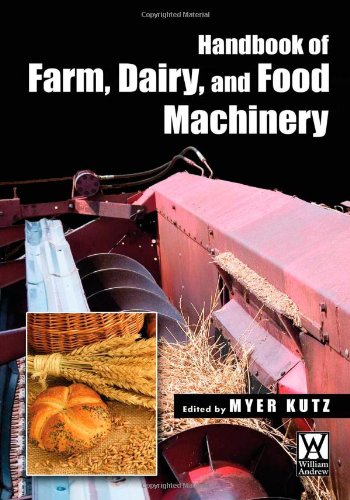

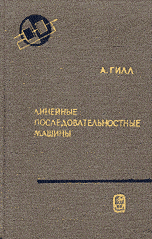

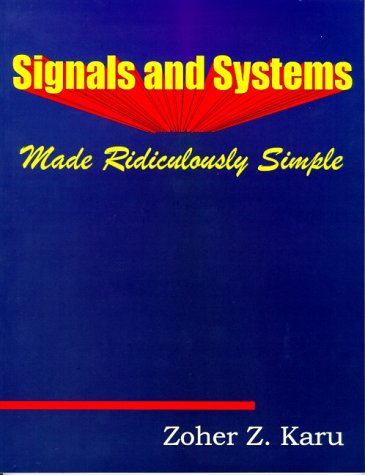
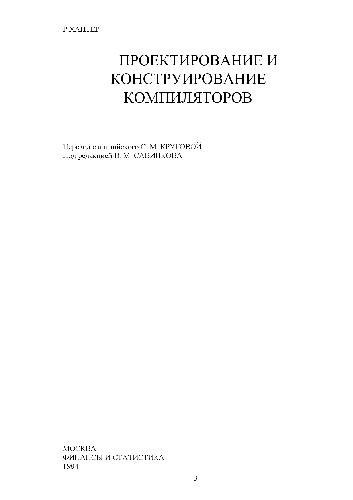
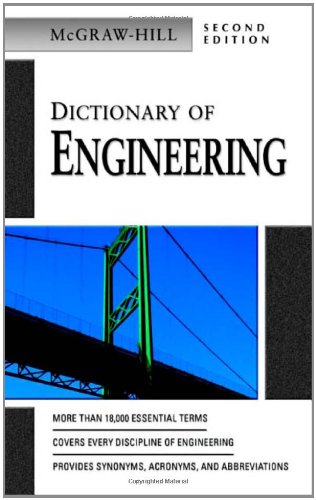
Reviews
There are no reviews yet.